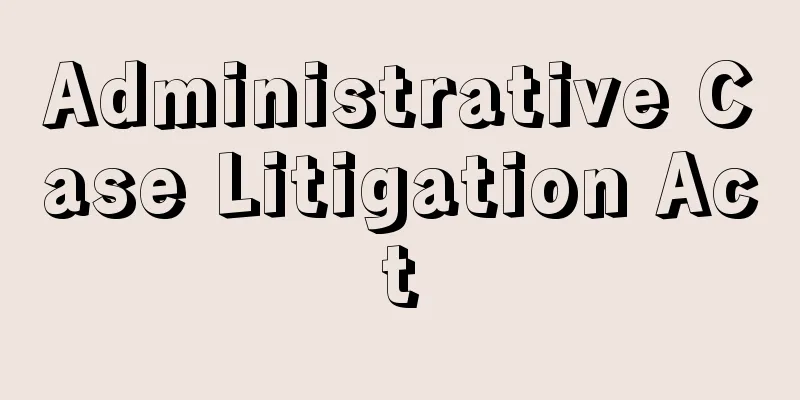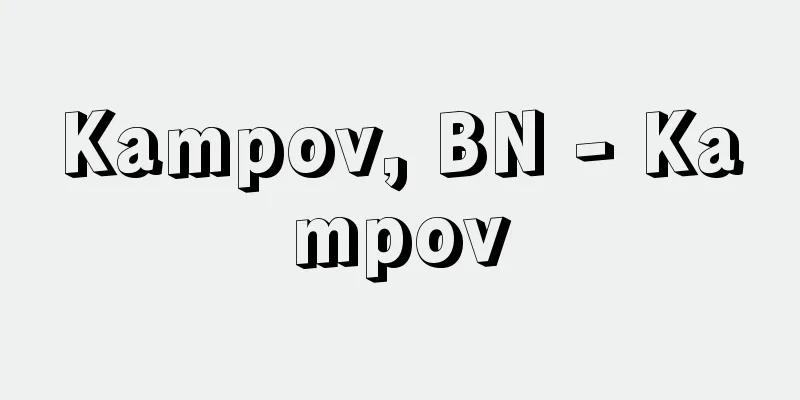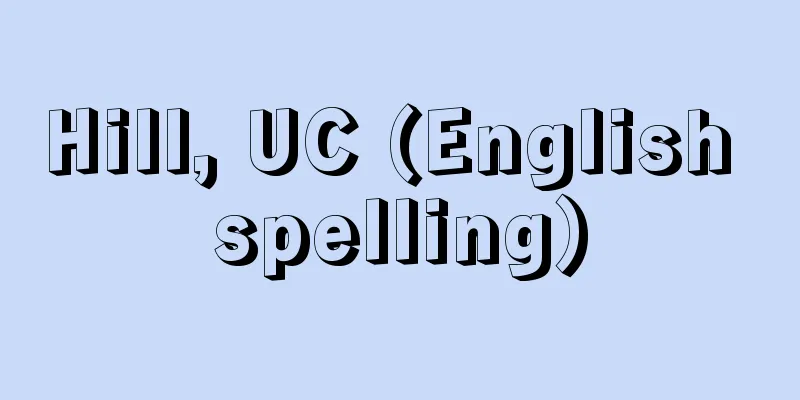Administrative Case Litigation Act

|
This is the basic law that applies to administrative litigation unless there are special provisions in other laws. Law No. 139 of 1962. The Civil Procedure Code applies only to matters not covered by this law. It was enacted to replace the previous Special Cases Law for Administrative Litigation, which had only 12 articles as special provisions to the Civil Procedure Code. This law does not have the status of a third procedural law alongside the Criminal Procedure Code and the Civil Procedure Code, but it is not simply a special case law to the Civil Procedure Code, but rather establishes an independent litigation system called administrative litigation. A major revision was enacted in 2004 (Heisei 16) and came into effect in 2005. This law defines administrative litigation as appeal litigation, party litigation, public litigation, and agency litigation, with each definition and provisions appropriate for administrative litigation. The core of the law is the provisions on appeal litigation, especially annulment litigation. Articles 8 to 35 are provisions on annulment litigation. For appeal litigation other than annulment litigation, such as actions for confirmation of invalidity, actions for confirmation of illegality of omission, and mandatory actions and injunction actions, which were codified in the 2004 amendment, special provisions are provided according to their characteristics, and the provisions on annulment litigation that are necessary according to their nature are applied mutatis mutandis (Articles 36 to 38 of the same law). Annulment litigation is a lawsuit that annuls (cancels the effect of) a disposition or other illegal exercise of public power. In principle, there is a six-month statute of limitations. If this period is exceeded, an action for confirmation of invalidity or a contentious action can be used. Previously, if a license or permit was applied for and no reply was received, the only option was to simply sue for confirmation of illegality of omission to confirm the illegality of the lack of a reply, but the 2004 amendment introduced a lawsuit requiring the issuance of a license or permit. Also, in cases where illegal administrative action is likely to be taken and a lawsuit would result in serious disadvantage if it were to wait until the action is taken before doing so, injunctive action is now permitted. Furthermore, while the only provisional relief available in response to an action for rescission was a suspension of execution, provisional obligations and provisional injunctions have now been introduced in response to actions requiring an action and actions requiring an injunction, respectively. There are two types of inter partes lawsuits: formal inter partes lawsuits (e.g., lawsuits filed by those whose land has been expropriated by a land expropriation ruling against the developer, i.e., the person who uses the expropriated land for public works, seeking an increase in the amount of compensation) and substantive inter partes lawsuits under public law. The latter were originally used for civil servants' claims for payment of wages and claims for refunds of overpaid taxes, and were of little use, but the 2004 amendment did not expand the concept of the subject (disposition) of appeal lawsuits, but instead expanded the path to rights relief by utilizing inter partes lawsuits, and in fact, the prohibition on mixed medical treatment has been deemed unconstitutional, and lawsuits for confirmation of status to receive health insurance medical treatment and lawsuits for confirmation of voting rights for Japanese nationals living abroad have been deemed lawful (Articles 4, 39-41 of the same law). Popular lawsuits (election lawsuits, resident lawsuits) and institutional lawsuits (disputes between local assemblies and the head of a local government, etc.) can only be brought by persons specified by law in cases specified by law. This law applies some of the provisions on annulment lawsuits mutatis mutandis to these lawsuits (Articles 5, 6, 42, and 43 of the same law). In addition, this Act restricts provisional relief by stipulating that provisional measures under the Civil Preservation Act cannot be issued for dispositions by administrative agencies or other actions that involve the exercise of public authority, regardless of the form of litigation (Article 44 of the Civil Preservation Act), and provides for some exceptions to so-called contentious litigation in which the existence or validity of an administrative disposition is disputed as a prerequisite for civil litigation (e.g., a lawsuit seeking the return of a public auction property on the grounds that the public auction disposition is invalid) (Article 45 of the Civil Preservation Act). [Yasuhito Abe] [Reference] | | | |Source: Shogakukan Encyclopedia Nipponica About Encyclopedia Nipponica Information | Legend |
|
行政事件訴訟について他の法律に特別の定めがある場合を除き適用される基本法。昭和37年法律第139号。この法律に定めがない事項についてのみ、民事訴訟法が適用される。民事訴訟法の特例としてわずか12条しかなかったそれまでの行政事件訴訟特例法にかわって制定された。この法律は、刑事訴訟法、民事訴訟法と並ぶ第三の訴訟法たる地位を有するものではないが、民事訴訟法の単なる特例法ではなく、行政事件訴訟という独立の訴訟制度を定めるものである。2004年(平成16)に大幅な改正法が成立、2005年に施行された。 この法律は、行政事件訴訟とは抗告訴訟、当事者訴訟、民衆訴訟および機関訴訟をいうものとして、それぞれ定義規定を置き、これについて行政事件訴訟にふさわしい規定を置くたてまえになっている。中心となるのは抗告訴訟、なかでも取消訴訟に関する規定である。第8条から第35条までは取消訴訟に関する定めである。取消訴訟以外の抗告訴訟である無効等の確認の訴えと不作為の違法確認の訴え、さらに2004年改正で明文化された義務づけ訴訟と差止訴訟については、それぞれの特質に応じた特例規定が置かれ、取消訴訟の規定のうちその性質に応じて必要なものを準用している(同法36条~38条)。取消訴訟は処分その他の違法な公権力の行使を取り消す(その効力を消滅させる)訴訟である。原則6か月の出訴期間の定めがある。この期間を徒過した場合には、無効等確認の訴えまたは争点訴訟が利用される。許認可を申請しても返事がない場合には、これまでは単に返事がないことの違法を確認する不作為の違法確認の訴えしかなかったが、2004年改正で、許認可などをせよとの義務づけ訴訟が導入された。また、違法な行政処分がなされそうで、なされてから争ったのでは重大な不利益を被るときは、差止訴訟が許されることとなった。そして、仮の救済としては、これまで取消訴訟に対応するものとして、執行停止の規定しかなかったが、義務づけ訴訟、差止訴訟に対応するものとして、それぞれ仮の義務づけ、仮の差止めが導入された。 当事者訴訟には、形式的当事者訴訟(例、土地収用裁決により土地を収用された者が補償額の増額を求めて起業者すなわち収用地を公共事業の用に供する者を被告に提起する訴え)と、実質的な公法上の当事者訴訟がある。後者はもともと、公務員の給与支払請求、過誤納租税の返還請求を例としており、ほとんど利用価値がなかったが、2004年改正で、抗告訴訟の対象(処分)の概念を拡大しないかわりに、当事者訴訟を活用して、権利救済の道を広げることとされ、現に混合診療禁止を違憲として、保険診療を受ける地位の確認の訴え、在外邦人の選挙権確認の訴えなどが適法とされている(同法4条、39条~41条)。 民衆訴訟(選挙訴訟、住民訴訟)、機関訴訟(地方議会と首長の間の争い等)は、法律に定める場合において法律に定める者に限り提起することができる訴訟である。本法はこれらについて取消訴訟の規定の一部を準用している(同法5条、6条、42条、43条)。 このほか、本法は訴訟形式のいかんを問わず、行政庁の処分その他公権力の行使にあたる行為については民事保全法に規定する仮処分をすることができないことを定めて、仮の救済を制限しているとともに(同法44条)、民事訴訟の前提問題として行政処分の存否または効力の有無が争われているいわゆる争点訴訟(例、公売処分の無効を理由とする公売物件の返還請求訴訟)について若干の特例を置いている(同法45条)。 [阿部泰隆] [参照項目] | | | |出典 小学館 日本大百科全書(ニッポニカ)日本大百科全書(ニッポニカ)について 情報 | 凡例 |
<<: Correctional facility - Kyouseishisetu
>>: Special Law on Administrative Litigation - Gyosei Jiken So Sho To Kureiho
Recommend
Plakat
…A type of outdoor advertising. In French it is c...
Charistes
A type of coelenterate tabular coral. It flourishe...
Fujikawa
A district of Okazaki City, Aichi Prefecture. For...
Antipathes japonica (sea pine)
A coelenterate (cnidaria) of the family Hylocercid...
Photon echo
A spectroscopic phenomenon that has a perfect anal...
Ensingen, U.von (English spelling) EnsingenUvon
… [Masayoshi Uozumi] [Ulm Cathedral] A representa...
L/D Program Orbit - L/D Program Orbit
…In contrast, in a lift trajectory, the decelerat...
Joachim Patenir (Patinir)
Flemish painter. His early biographical facts are...
Cupressus arizonica (English spelling) Cupressusarizonica
…[Masao Yamashita]. … *Some of the terminology th...
Sumeru [Mountain] - Sumeru
An active volcano in eastern Java, Indonesia. It i...
Hu Shi - Koteki
A modern Chinese intellectual. He studied in the U...
common carrier
...Refers to maritime transportation services usi...
Mini-states
A ministate is a state with an extremely small ter...
Audran, E. (English spelling) AudranE
…In this sense, many talismans can be called masc...
Seizure - Confiscated
In a broader sense, it refers to an act of author...









